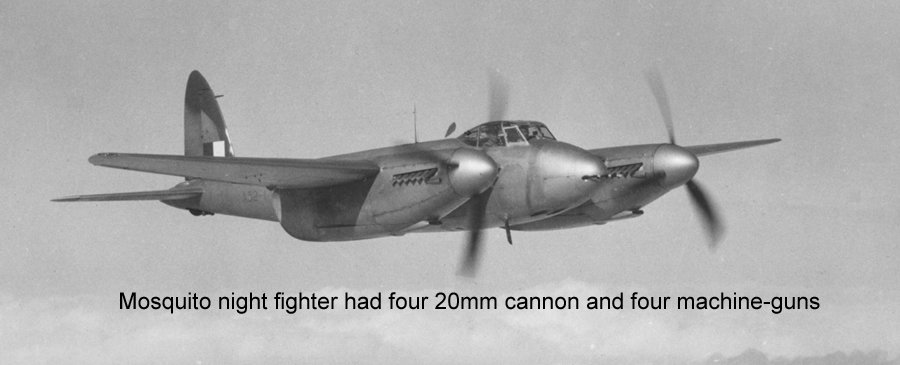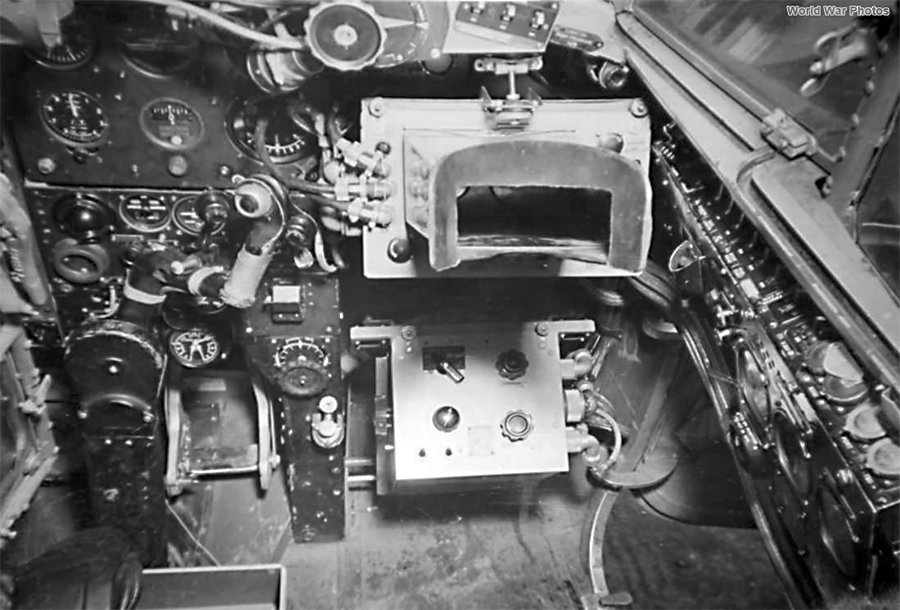
Ian McRitchie’s 151 Sqn received its first Mosquito night fighters in April 1942, replacing its cannon-armed Hurricane IIcs, and the Defiants were replaced in July. It was the aircraft he had been waiting for.
Within a few weeks of conversion, on the night of July 30, he shot down a Dornier 217 about 60 miles off the Norfolk coast, but his radio failed so he returned to base at Wittering in the absence of ground radar guidance, on the way noticing some anti-aircraft fire which might indicate the presence of more raiders.
His radar op, Flt Sgt Fred James, then picked up a target at the extreme range of his Mk 5 airborne radar, but lost it. They were in the Wittering circuit for landing when Ian noticed AA fire and searchlights over Farnborough to the south and as they climbed towards it Fred picked up another target on his radar.
They caught up on the raider and just as Ian began his attack a searchlight illuminated the Mosquito. Alerted, the German pilot made a diving turn which was difficult to follow on the AI Mk 5 and they lost sight of it.
As they climbed again at around 2am they spotted another raider in a searchlight beam and a target appeared on radar coming towards them. Ian entered a tight turn and found another Dornier 217 in his sights, but the searchlight again illuminated the Mosquito and the German began evasive action, closely followed by the Mosquito which was nearly hit as the bombs were jettisoned. The German gunner also scored hits on the Mosquito wing, but could not avoid the 20mm cannon shells hitting his wings and fuselage.
By this time the pair were down to 1300ft and Ian had difficulty seeing the Dornier against the dark ground, while the radar returns were lost against the surface. After firing all his ammunition Ian broke off and returned to Wittering after a four-hour sortie, claiming their second victim as damaged.
Next day they heard that the AA detachment had claimed a Dornier 217 shot down around the same time as their action. The aircraft crashed into bogland near Peterborough, its four crew being killed.
 The incredibly cramped cockpit of the Mosquito night fighter has barely enough room for the instrument panel and radar screen. The radar operator/navigator sat slightly behind the pilot so their shoulders could overlap as there was insufficient room to sit side by side. Imagine doing a four-hour sortie in this tiny space ...
The incredibly cramped cockpit of the Mosquito night fighter has barely enough room for the instrument panel and radar screen. The radar operator/navigator sat slightly behind the pilot so their shoulders could overlap as there was insufficient room to sit side by side. Imagine doing a four-hour sortie in this tiny space ...
On the night of September 8/9 Ian and Fred caught another Dornier, jinking violently at 200 mph and heading north. Ian opened fire with a four-second burst from 300 yds, causing a fire in the fuselage.
His combat report stated: “Enemy a/c began diving turns with ineffectual return fire but failed to avoid a further three-second burst which set the port engine on fire. Another three-second burst hit the wings and the bomber dived into the ground, exploding in a vivid white flash”.
The Dornier 217, which crashed at Orwell near Cambridge with the loss of all crew, was Ian’s last combat victim. After 105 sorties he was promoted Flt/Lt and in July 1943 was posted to 51 OTU as an instructor, leaving a major engineering development of the Mosquito night fighter as his legacy. More details next week!